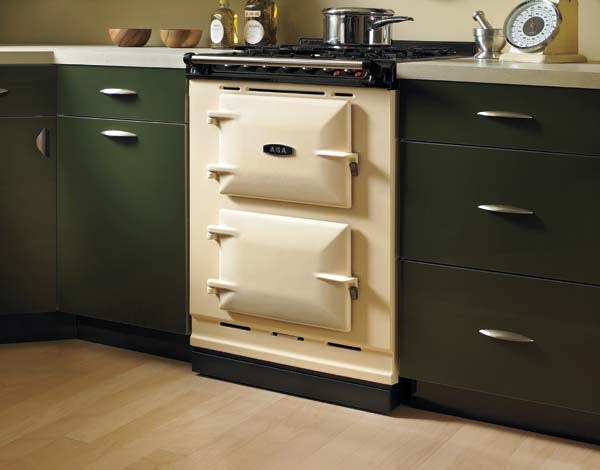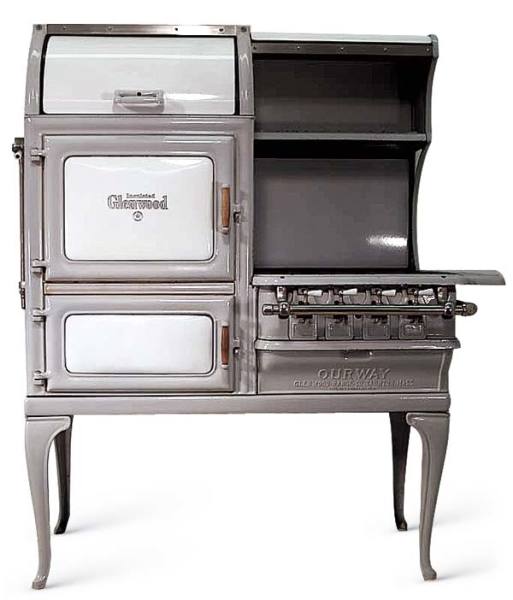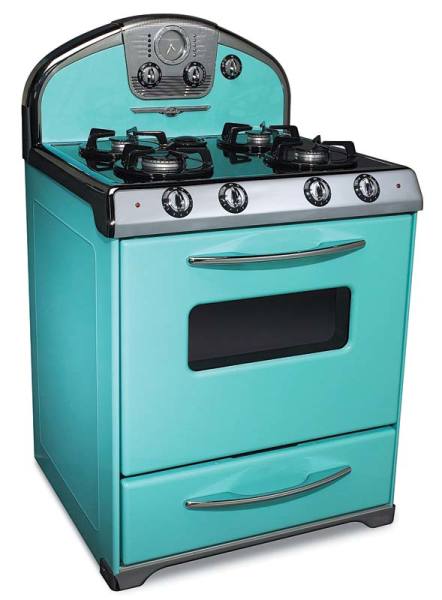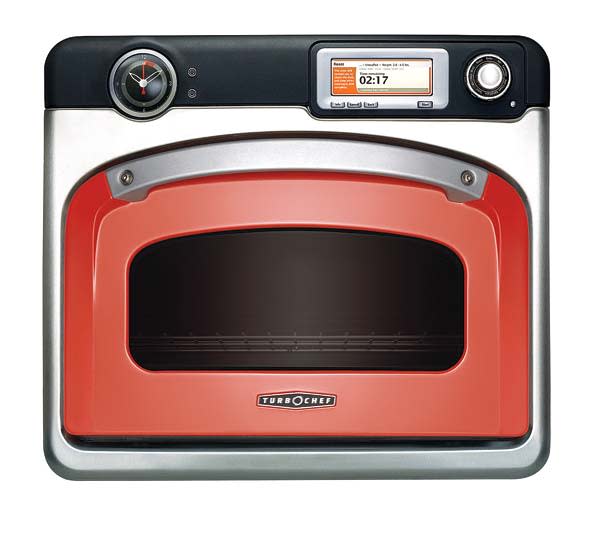A narrow two-oven model from the new, smaller ‘Companion’ line by Aga Cookers.
When I bought my 350-square-foot pied-à-terre in New York’s Greenwich Village, the very first thing I did was look for a stove. (The chrome Kenmore that came with the apartment not only was too modern, but it also took up half of the galley kitchen!) I wanted something more in keeping with the late-19th-century apartment.
Vintage Stoves
It was hard for me to choose between a vintage fixture (rehabbed, of course) and a plain, modern stove. A modern stove just can’t come close to the look of an original Glenwood Deluxe—those gracefully arching legs, the period’s cream and jadeite green enamel.
A ca. 1930 vintage Glenwood, safely refurbished by The Good Time Stove Company.
Richard Richardson of Good Time Stove explained to me that a converted antique is basically a new stove; each one is torn down and overhauled —insulated, sandblasted, repainted and replated, updated with new cast-iron burners (as needed) and a stainless-steel speckleware oven (gas or electric), fitted with repacked valves, and equipped with pilot lights and thermostats calibrated to meet the most rigid modern codes.
His stoves come in a wide variety of styles and combinations of gas, electric, and wood-burning models, starting from about $3,000 for a classic 1930s gas and electric stove to over $10,000 for a Magic Chef, a cook’s dream with six or more burners, two ovens, broiler, bread warmer, work light, clock, and more.
Reproduction Stoves
I had to admit that modern conveniences can be nice. I like cooking on ceramic cooktops, and it’s hard to say no to a self-cleaning oven. So I thought about a reproduction.
The ‘Northstar’ line from Elmira Stove Works adds high-tech to a 1950s look, available in nine automotive-finish colors with chrome.
Elmira Stoves manufactures two new, old-style stoves: their ‘Antique’ (based on a Victorian wood-burning model) and ‘Northstar’ (a retro 1950s range). Both have the look of a vintage stove but satisfy today’s expectations. You can choose a convection oven or an infrared broiler—and finishes come in classic white or black as well as Cayenne Pepper red and Liberty Blue, with a choice of nickel, antique brass, or copper trim. (I especially like their online Range Selection feature, which lets you build your own stove from a variety of range-top, oven, color, and trim options.)
European Cookers
Then again, I’ve always yearned for an Aga Cooker, the centerpiece of many a charming English kitchen. Invented by a Swedish physicist in 1922 and manufactured in England since 1932, Aga stoves deliver a consistent, even heat from gas, oil, or electric. The chef can move among cast-iron ovens for roasting, baking, simmering, and warming (depending on the model) and plates on top (protected by insulated covers when not in use) for warming, simmering, and boiling. The stove is always “on,” and there are no knobs or dials, yet the Aga is energy-efficient and cheaper to run than a standard gas stove.
Today’s Agas comes in fourteen enamel colors, from a classy Wedgwood blue and buttermilk ivory to plum and milk chocolate. (The black is ageless.) Recently added to the line are two-oven, four-burner ‘Companion’ duel-fuel, gas and electric models. With widths starting at just 24 inches, these are perfect for space-starved kitchens like mine in New York. Just plug one into a 240-volt, 30-amp circuit and hook it up to a standard gas line; the stoves don’t even require venting.
New Technology
TurboChef makes wall ovens with fast-cooking “airspeed technology” and a retro design in six colors plus stainless.
If money were no object, I think I would have gone for the gold: TurboChef’s new ‘Speedcook Oven’, which combines retro design and the best of modern technology. It has broadly curved edges and fire-red, hearth-shaped doors, but it cooks 15 times faster than conventional ovens, using heated air blown through the oven at speeds up to 60 mph, a process that allows foods to retain more moisture and flavor. A TurboChef starts at $8,000, but it can cook a chocolate soufflé in two minutes.
Hoods & Vents
If I did more cooking than the occasional quick meal, I’d need a hood and vent—not only to remove odors and steam, but also to reduce the spread of stove fires. Hoods hang over the stove to collect the odors, grease, and gases while vents and blowers remove them. Vent-A-Hood, the country’s oldest hood and vent manufacturer, recommends a minimum hood overlap of three inches over each side of the stove, and especially over the front to properly catch the vapors. They warn that the proper height above the stove is 30 to 36 inches—not much higher.
Be sure to use only smooth, galvanized metal ducting (not flexible or corrugated, which restrict air flow); vent directly outdoors, never to the attic or the chimney, to prevent spreading fires. Hoods come in a wide range of sizes, styles, and prices, and custom models are often chosen for vintage stoves. RangeCraft’s new ‘Canterbury’ hood in shimmering brass and copper, a work of art with decorative brass buttons.
Anyway, in New York, I ended up with a rehabbed ‘Quality’ stove from the 1930s, and I’ve been quite happy with its clean gas burners and new electric oven. Now I’m thinking about something new—or old—for my Seattle kitchen…







